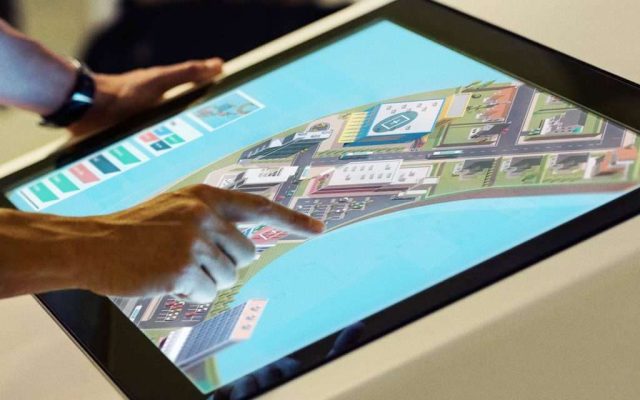Touchscreen Solutions
Touchscreen Design: 5 Things to Consider
Touch-Sensing Technology
Arguably, one of the most important things to consider when designing a touchscreen device is the technology powering it. There are many different solutions available, some of which include capacitive, resistive, surface acoustic wave, surface capacitance, projected capacitance and more. Of those options, however, capacitive and resistive are the two most popular choices. Resistive touchscreens identify touch by pressure, whereas capacitive touchscreens identify touch by measuring the electrical charge produced by the human operator.
Single-Touch or Multi-Touch
You should also consider whether to use single-touch or multi-touch technology. Many smartphones, tablets and other touchscreen devices now support multi-touch functionality, which as the name suggests allows for touch-based commands in which two or more points are touched simultaneously. Pinch-to-zoom is a example of multi-touch function, as it allows zooming in and out by pinching in or out with two fingers.
Water-Resistance
If you plan on using your new touchscreen device outdoors — or in other environments where moisture is a concern — you’ll want to make sure it’s designed with water-resistance properties. The intrusion of moisture can damage electrical switches and components. Thankfully, there are now water-resistant and waterproof options available for use in touchscreen devices. Refer to the device’s Ingress Protection (IP) rating for more details regarding whether or not it’s resistant to water and dust. Not to be confused with Internet Protocol, Ingress Protection is the universal standard scoring system for a device’s resistance to the intrusion of moisture and dust.
Resolution Quality
Of course, you should also consider the resolution quality when designing a touchscreen device. The use of thin film transistors provide high resolution and subsequent image quality, but they don’t come without their own costs, such as increased power consumption. So if you want a device with a long battery life, you may want to choose a different display configuration. In-plane switching liquid crystal display (IPS-LCD) is an alternative solution that offers both high resolution and low power consumption. Active-matrix organic light emitting diode (AMOLED) is another solution with both high resolution and low power consumption.
Software
A touchscreen device must also use software, which is yet another consideration to make when designing it. Mobile devices such as smartphones and tablets typically use a mobile operating system like Google Android or Apple iOS. They may also, however, have their own third-party software installed over the base OS. In any case, you’ll need to consider the software used in your touchscreen device’s design, as this will affect many aspects of its functionality.

